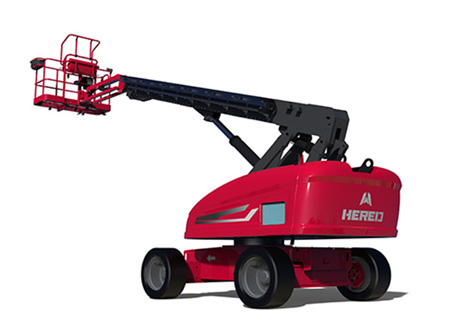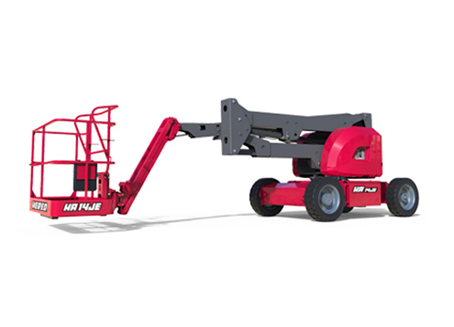Telescopic vs Articulating Boom Lifts
Boom lifts carry workers and materials up and down, transporting them to work in high places that are difficult to access. The two most popular types of boom lifts are the articulated boom lift and the telescopic boom lift. Both have hydraulic arms and offer a significant range of action. The choice boils down to two main considerations: how high the work platform needs to go and whether it needs to go around obstacles.
Telescopic boom lifts: when you need maximum reach
Telescopic boom lifts, also known as stick booms or straight booms, have a boom that "telescopes" directly from the boom hoist attached to the lift's chassis. Some models have a range of up to 185 feet, but the more common maximum range is around 150 feet.
These aerial lifts or Mobile Elevated Work Platforms (MEWPs) can be used when crews need to work at height or access areas blocked by rough terrain. They are suitable for a wide variety of jobs including industrial maintenance, electrical work, painting, window glazing, bridgework or inspections, tree trimming, and any task that requires access to multi-story buildings.
The telescopic boom extends quickly and in some positions, it is possible to drive the lift with the boom fully extended.
Articulated boom: when you need to get around an obstacle
Articulated boom lifts, also known as knuckle booms, have to lift arms with multiple sections separated by joints or "knuckles". The arm moves the work platform over obstacles. This type of boom lift is used whenever workers need to access particularly narrow or difficult-to-reach areas or need to change position frequently.
The tallest articulating boom lifts manufactured today have a lift height of 150 feet and an extension of 75 feet. This boom gives you less horizontal reach than a telescopic boom, but it offers both vertical and horizontal flexibility.
As with telescopic boom lifts, articulating boom lifts can travel over uneven terrain.
Safety tips for working at height
1. Check the basket before you go in. The basket floor is the only thing between you and the ground, so check it out. Make sure there are no large cracks in the mesh floor and no cracked welds.
2. Inspect the tie-off points. Tie-off points are welded to the structure. Check the welds and make sure there aren’t any cracks.
3. Check the control panel for a safety label. All switches on the control panel should be labeled. Boom lift manufacturers make sticker kits for each machine to make it clear what each switch does.
4. Keep away from power sources. Keep 15 feet away from any power source, including overhead or earth wires.
5. Do not use cribbing. The boom will not extend all the way up when the lift is out of level. Do not attempt to level the boom lift by covering this safety feature with paddings such as boards or bricks. Instead, reset the lift on a flatter surface.
6. Additional aerial lift safety tips are available from the Occupational Safety and Health Administration (OSHA).





